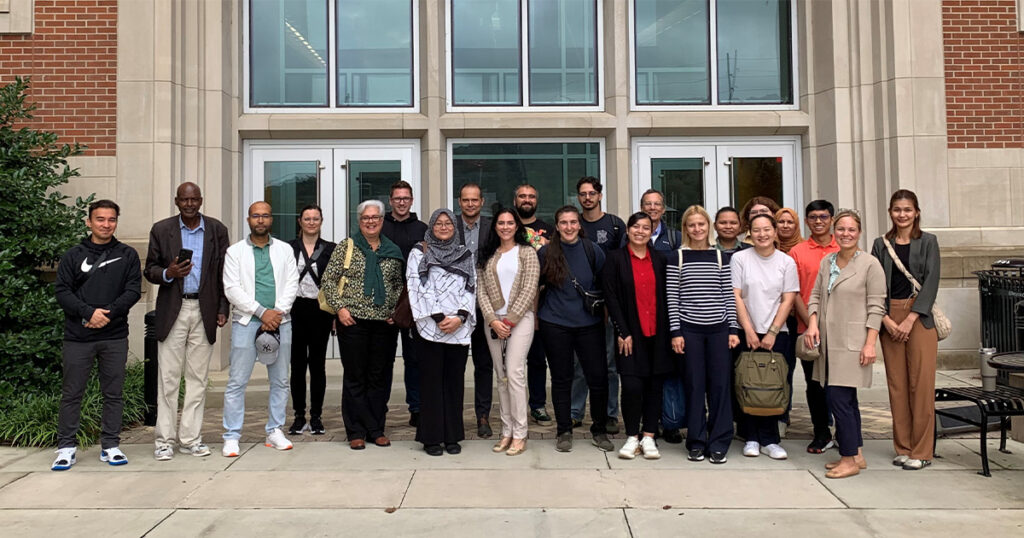Nuclear Engineering Assistant Professor Ivis Chaple Gore didn’t have to leave Knoxville to spread her knowledge about radiochemistry across the world.
Chaple Gore recently helped coordinate a two-week class about the peaceful uses of nuclear applications that was jointly organized by the International Atomic Energy Agency (IAEA) and Oak Ridge National Laboratory (ORNL).
The class, which was held September 23rd–October 4th at Oak Ridge National Laboratory, consisted of 16 professional students from some of the least-developed countries in the world (Argentina, Armenia, Brazil, Ethiopia, Indonesia, Kazakhstan, Malaysia, Mexico, Mongolia, Morocco, North Macedonia, Philippines, Romania, Thailand, Tunisia, and Uruguay). The students were professionals in nuclear medicine sciences, including pharmacists, physicians, scientists, and chemists, and more.
The goal of the class was to illustrate how critical nuclear medicine applications are and how they can be used safely, securely, and peacefully for the benefit of humanity.
“Right now, the US is a leader in nuclear medicine and radio pharmaceutical development, but we want to distribute that globally,” Chaple Gore said. “We want patients all over the world to have the same level of access, and if we can increase collaboration, increase training and increase knowledge transfer, then we can achieve that quicker.”
Class Experiences
During the class, the students toured Gore’s radiochemistry lab at UT to show how they can set up similar labs at their universities. They also visited the University of Tennessee Medical Center to see the new small animal PET/CT instrument and toured the facilities at the University of Alabama at Birmingham.
Cathy Cutler, the director of the isotope research and production department at the Department of Energy’s Brookhaven National Laboratory, gave two talks to the class, along with industry leaders from major corporations, such as Siemens.
“One of the things that we learned is that preclinical testing in many of these countries is really highly regulated, so they’re not able to develop new drugs as easily as we are,” Chaple Gore said. “But they can collaborate with us, and that’s one of the goals for the school as well. And from everything that we’ve heard, it’s been very well received.”
Chaple Gore was honored to be involved in something on such a large scale like the joint venture between IAEA and ORNL. Along with imparting her own wisdom from years of research and experience, Chaple Gore gained a lot of valuable insight.
“I think that my biggest takeaway was sometimes we think about collaboration as a local effort, but we really need to be thinking about it as a global effort,” she said. “We need to be reaching out to scientists in other countries and seeing ways that we can collaborate so we can ultimately increase the availability of new drugs for patients around the world.”
Contact
Rhiannon Potkey (865-974-0683, rpotkey@utk.edu)
